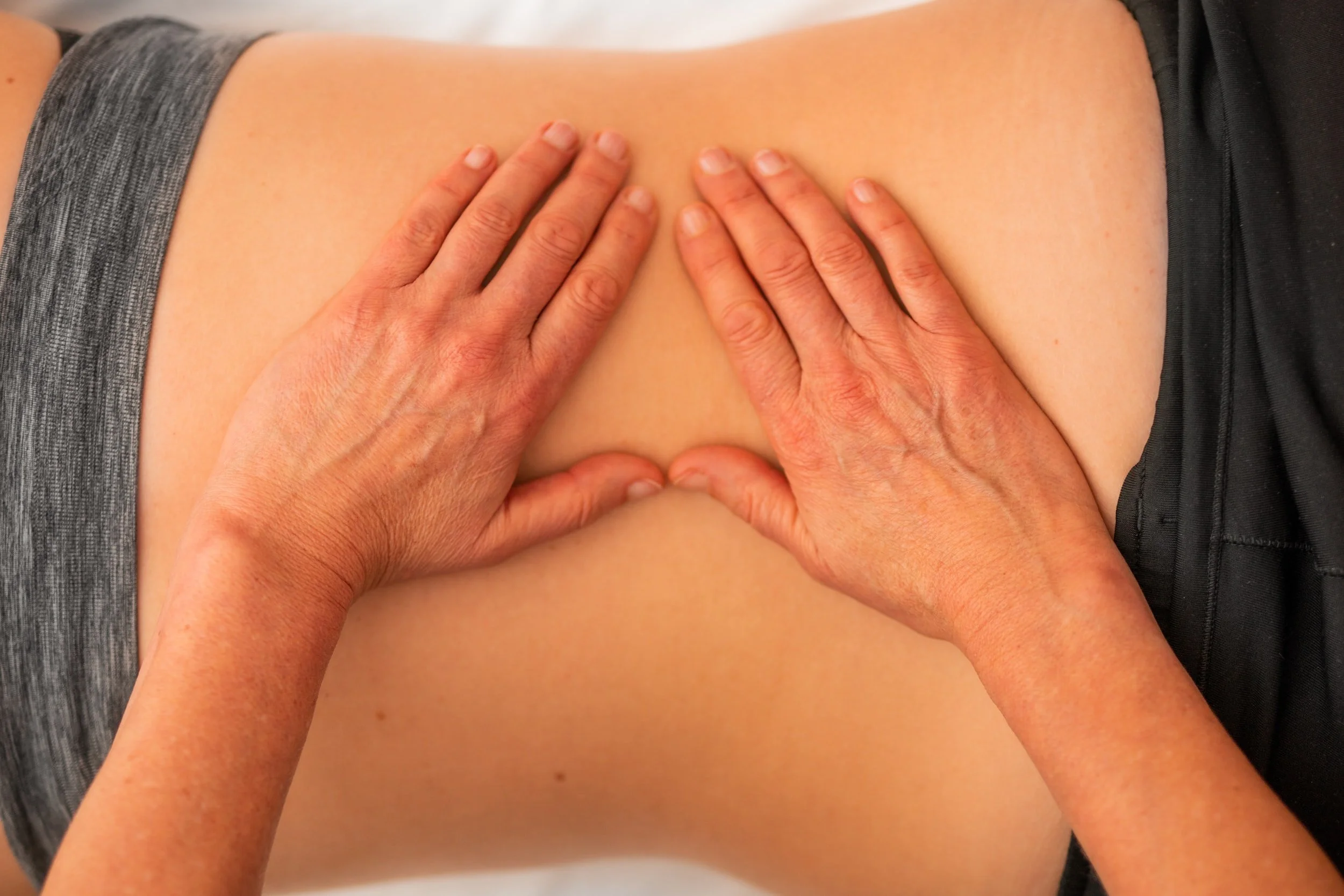
Myofascia release
What is myofascia release?
Myofascia release is a gentle, safe and very effective form of massage. Fascia differs from muscles in its makeup, so it requires a different approach. It responds to gentle and sustained light pressure, which allows the fascia to elongate.
Myo = muscle Fascia = a three-dimensional network of connective tissues. It wraps around and runs through every structure of the body, i.e. muscles, tendons, blood vessels, nerves and our internal organs.
Healthy fascia moves fluidly whilst we move. But when fascia gets damaged it becomes ‘sticky’ and this can restrict our movement or the function of the structures it is restricting. Restrictions in one part of the fascial web can affect other parts of the fascia network too. It is like a snag in a pair of tights. The surrounding area suffers from the snag too.
Examples of injury to the fascia are: surgery and scar tissue, underuse or overuse of our body (think of posture and modern day lifestyle) psychological stress or trauma and dehydration.
Myofascia injuries and restrictions
Examples of how fascia can get injured or restricted are: a direct blow to the body, (sports) injuries, inflammation, surgery and scar tissue, underuse, or overuse of the body, (psychological) stress or trauma and even dehydration.
Fascial restrictions can affect range of movement, it can cause pressure and pain. This can lead to chronic pain conditions. Fascia is not visible on most forms of diagnostic imagine like X-rays, MRI scans, CAT scans, EMG. Hence people with chronic pain or chronic stiffness and tightness will not get a diagnosis based on fascial restrictions. However, a trained professional can feel the fascial restrictions and help to ease them. Releasing these restrictions can have a powerful effect.
How does myofascia release work?
Myofascia release is a gentle, safe and very effective form of massage. Fascia differs from muscles in its makeup, so it requires a different approach. It responds to gentle and sustained light pressure, which allows the fascia to elongate.
Myofascia is a bit like corn flour starch. If a strong pressure is applied it hardens but when gentle pressure is resting on it, fascia melts and becomes pliable.
During treatment work is mostly aimed at the superficial fascia, just a few millimetres below the skin. This superficial layer connects via millions of diagonally arranged fascial threads leading down the deep fascia that surround and support our internal organs, muscles and other deeper structures. This is why myofascial release can have a deep and long-lasting effect.
It is important to also engage in self-care advice and gentle stretches. Exercises such as a weekly Pilates class will also be very helpful as it will encourage the body to use its new-found freedom of movement adopt new and more efficient movement patterns.
Myofascia release is suitable for anybody from elite athletes to those who can barely move due to chronic pain. Due to its gentle touch even those with high sensitivity can tolerate and benefit from myofascial release, often finding that it reduces the hypersensitivity of the skin and structures below the skin.
Examples of conditions that can be treated:
Back pain - with or without sciatic pain
Headaches, depending on their cause
Osteoarthritic joints (MFR can relieve symptoms and provide more comfort but not cure osteo arthritis)
Postural issues
Fibromyalgia
Facial pain
Scars
Repetitive strain in arms/ wrists
Brachial plexus and other nerve related problems in arms or legs
chronic tight hamstrings and glutes
